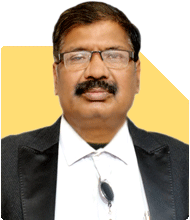Ramalingam Kalirajan |8083 Answers |Ask -Follow
Mutual Funds, Financial Planning Expert - Answered on Apr 22, 2024
He has an MBA in finance from the University of Madras and is a certified financial planner.
He is the director and chief financial planner at Holistic Investment, a Chennai-based firm that offers financial planning and wealth management advice.... more

I am 33 year old. I have total 18L in Mutual fund and a car loan with Outstanding amount of 9L and a home loan with outstanding amount of 24L. My monthly take home salary is 1.8L, Monthly Emi : 55K, monthly expense 50K and SIP: 65K. I am married but no kids yet, Even though i pay EMI of flat i never consider it to be mine as its for my parents. I am worried that i am not saving enough for family planning and retirement. Can you please guide me if i should pay out the loan or buy a flat/land. I want to plan for retirement at 55 and kids by next year.
1. Increase Emergency Fund: Aim for 3-6 months of living expenses in a safe, liquid option like a debt fund.
2. Prioritize Retirement: Increase your SIP (consider reducing car loan EMI if possible) to invest for retirement. Balanced mutual funds are a good option.
3. Family Planning: Discuss reducing expenses to create a buffer for potential child-related costs.
4. Homeownership: Hold off on buying a new property until your financial situation allows for additional commitments.
Talk to a financial advisor for a personalized plan considering your risk tolerance and specific goals.
You may like to see similar questions and answers below
Ramalingam Kalirajan |8083 Answers |Ask -Follow
Mutual Funds, Financial Planning Expert - Answered on May 06, 2024
Ramalingam Kalirajan |8083 Answers |Ask -Follow
Mutual Funds, Financial Planning Expert - Answered on May 13, 2024
Milind Vadjikar |1087 Answers |Ask -Follow
Insurance, Stocks, MF, PF Expert - Answered on Oct 08, 2024
Ramalingam Kalirajan |8083 Answers |Ask -Follow
Mutual Funds, Financial Planning Expert - Answered on Dec 07, 2024
Rajesh Kumar Singh |150 Answers |Ask -Follow
IIT-JEE, GATE Expert - Answered on Mar 06, 2025
Rajesh Kumar Singh |150 Answers |Ask -Follow
IIT-JEE, GATE Expert - Answered on Mar 06, 2025
Rajesh Kumar Singh |150 Answers |Ask -Follow
IIT-JEE, GATE Expert - Answered on Mar 06, 2025
Rajesh Kumar Singh |150 Answers |Ask -Follow
IIT-JEE, GATE Expert - Answered on Mar 06, 2025
Sushil Sukhwani |588 Answers |Ask -Follow
Study Abroad Expert - Answered on Mar 06, 2025
Radheshyam Zanwar |1340 Answers |Ask -Follow
MHT-CET, IIT-JEE, NEET-UG Expert - Answered on Mar 06, 2025
Mayank Chandel |2086 Answers |Ask -Follow
IIT-JEE, NEET-UG, SAT, CLAT, CA, CS Exam Expert - Answered on Mar 06, 2025
Rajesh Kumar Singh |150 Answers |Ask -Follow
IIT-JEE, GATE Expert - Answered on Mar 06, 2025

Radheshyam Zanwar |1340 Answers |Ask -Follow
MHT-CET, IIT-JEE, NEET-UG Expert - Answered on Mar 06, 2025
Rajesh Kumar Singh |150 Answers |Ask -Follow
IIT-JEE, GATE Expert - Answered on Mar 06, 2025






















